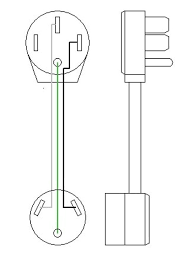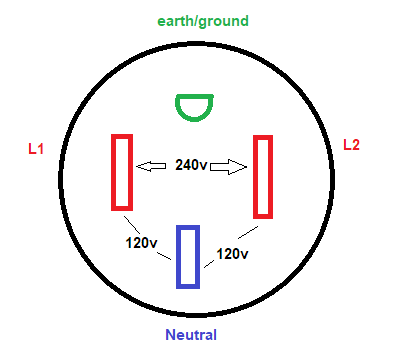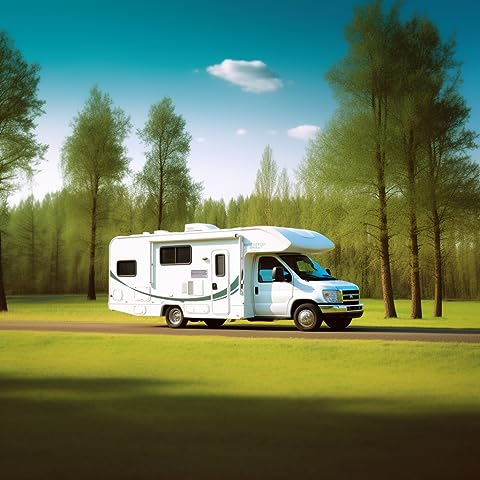Plugs are confusing, and wiring a 50 amp plug can be difficult if you don’t know how to do it personally or don’t have an expert’s help regarding the same. Different plugs carrying the same amount of current may be designed differently.
If you are wondering how you would know the voltage of a 50 amp RV service, the simplest way to determine this is by counting the prongs and the wires of the plug. If there are 3 plugs and 3 wires, you would have a 120-volt system, while if you have 4 wires, then it’s a 220-volt system.
To understand more about the voltage dilemma and other things, this blog will provide you with the correct guidance.
What is the Voltage of a 50 Amp RV Plug?

Traditionally, if you have a 4-wire, 4-prong, 50 amp plug, then it is a 220-volt 50 amp RV service comprising 3 wires and 3 prongs, it would be a 120-volt system. So, if you plug your 4-wire 50 amp power cord into a three-wire system, your 50 amp RV electrical system and appliances would fry up. Also, if there are 3 wires, it cannot be connected to a 4-wire outlet. Both of these connection anomalies would result in the same disaster for your RV electrical system and the appliances as well.
But now all the RV electrical systems are 240/120 or 120/240/. Thus, to simplify things, you must be able to match the plug with the RV outlet. If the RV outlet and appliances have 4 prongs, then the plug also needs to have 4 points. The electrical outlets and appliances in a 50 amp RV service rely on the 240/120 circuit and utilize 120 volts when switched on.
Wiring a 50 Amp RV Outlet

Most enthusiastic RVers lack knowledge about electricity and electrical connections. Relying on professional electricians is the key to getting the job done best. But when you have parked your RV in a park or camp, you must know how to operate the available connections on your own in case you don’t find a professional around.
So, if you want to know how to wire a 50 amp RV outlet, you must initiate with gathering your supplies. After this, you will need to shut off the main breaker to ensure that you don’t have any power in the circuits you will be working on.
Now, you must install a 50 amp breaker separately and wire it appropriately. The 50 amp wiring involves a specific color code system. To connect the right wires to the right terminals, you need to have sound knowledge of the color code system. The green terminal is for the ground wire, while the two brass terminals are for hot wires. The hot wires will be in red and black colors. However, sometimes, they may be both in black colors. Ultimately, the silver terminal is for the neutral wire.
So, you can wire both the hot wires to the brass terminals. The ground wire will go to the green terminal or the terminal which is behind the U-shape. The white neutral wire goes to the silver terminal.
Ensure the hot wires go into the breaker and the ground and neutral buses inside the breaker panel. Followed by this, you have to tighten the screw.
Finally, you can turn the power on and test with the help of a voltmeter. The way to set the system to 240 volts is by placing one probe on one hot leg and another on the neutral one. If the meter shows 120, then the wiring, adjustment, and testing are correct.
Now, repeat the process for the other leg. You must place both the probes on the hot legs and if the meter reading comes to 240, your wiring, a 50 amp RV outlet, is successful.
How to Protect Your RV from Surges, Low Voltage, and Bad Wiring?
The best way to protect your RV electrical system from surges, low voltage fluctuations and cut-outs, and bad wiring scenarios is by installing a surge protector. Surge protectors are available as portable units or hardwired ones. But a surge protector will protect your RV only against power surges. You need to employ an autoformer to protect against low-voltage issues.
Final Thoughts
A 50-amp RV service facilitates running several appliances together. However, if you have parked at a campground or RV park that doesn’t have a 50 amp shore power to support your 50 amp RV service, then you would need to know how to get around this problem.
If you wonder whether your 50 amp RV receptacle needs GFCI protection, you may refer to the National Electrical Code or NEC for detailed information. However, in general, you must know that for 30-amp and 50-amp outlets, GFCI protection is mandatory.
So, hopefully, this blog has provided you with a repository of information that would help you know what the voltage of your 50 amp RV service is and more.

